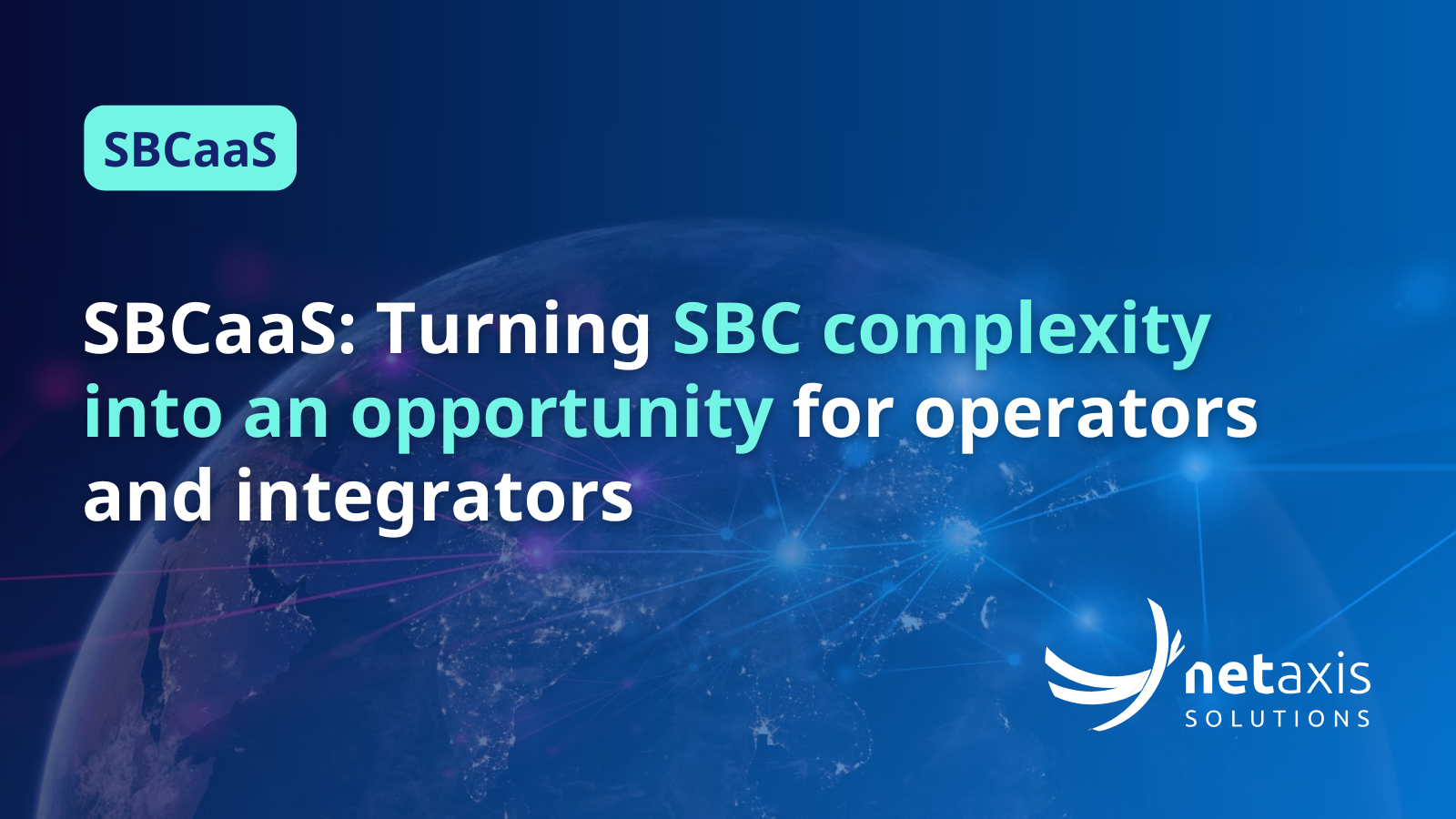Table of Contents
The critical role of SBCs in Modern Voice Networks
Session Border Controllers (SBCs) are critical in today’s voice and unified communications environments for managing and securing real-time voice traffic. In a Voice over IP (VoIP) or UCaaS (Unified Communications as a Service) deployment, an SBC acts as the demarcation point between an enterprise’s network and the service provider’s network, protecting both sides. Traditional firewalls alone are not equipped to handle SIP-based voice sessions; SBCs fill this gap by policing and protecting voice flows. They enforce security policies and help prevent malicious attacks (like denial-of-service assaults, toll fraud, or vishing scams), and even hide the internal network topology from outsiders. In short, SBC’s ensure calls are secure, high-quality, and compliant with regulations.
Equally important, SBCs provide interoperability and quality control in multi-vendor environments. They can translate between different signalling protocols and codecs, manage Quality of Service (QoS), and perform network address translation — all of which are essential for seamless voice and video communication across disparate system. With nearly 90% of organizations now using UCaaS as either their primary or hybrid phone system, SBCs have become mission-critical infrastructure. They ensure that unified communication platforms (Microsoft Teams, Zoom Phone, Cisco Webex, etc.) can connect to traditional telephony (PSTN) and SIP trunks securely and reliably. In fact, any service provider or enterprise using SIP-based services needs an SBC (hardware-based, virtual, or cloud-based) because conventional network devices are not designed for the real-time nature of voice sessions.
The challenge: Complexity in SBC management growing exponentially as volumes grow
While SBCs are indispensable, deploying and managing them is highly complex. SBCs typically require specialized expertise to configure routing, policies, security rules, and to integrate with PBX or UC systems. Continuous maintenance is needed to keep firmware updated, ensure compatibility with new services, and monitor for security threats. For many organizations, maintaining this in-house is a burden – misconfigurations or neglected updates can lead to quality issues or security vulnerabilities. Operating an SBC is not a “set-and-forget” task, and skilled VoIP engineers are needed to handle moves/adds/changes (MACs), diagnose call issues, and update routing logic on a day-to-day basis.
Because of this complexity, many enterprises choose to outsource SBC management to telecom operators or system integrators who specialize in voice infrastructure. Outsourcing allows businesses to focus on their core functions while experts handle the SBC – a key reason why 65% of companies cite outsourcing as a strategy to improve focus and efficiency. The do-it-yourself approach, on the other hand, can be costly and risky. Companies going alone face high upfront licensing costs and must dedicate staff time for maintenance and troubleshooting, incurring significant ongoing expense. In fact, managing an SBC in-house means your skilled IT staff spend time on technical administration instead of higher-value projects. Given these challenges and costs, only organizations with a very experienced voice engineering team (or a strong partner) can justify running their own SBCs. For everyone else, the complexity of SBC management has traditionally been a necessary headache – but also a growing opportunity for service providers to step in with a solution.
What is SBC as a Service (SBCaaS)?
This is where Session Border Controller as a Service (SBCaaS) comes into play. SBCaaS is essentially a managed SBC offering provided by an operator or managed service provider, delivered in an as-a-Service model. Instead of the enterprise buying, installing, and managing an SBC appliance (hardware and/or software) on their premises, the SBC functionality is offered as a hosted service that the customer can consume on demand.

In practical terms, an SBCaaS solution is a one-stop service that includes the core capabilities of an SBC – secure SIP session control, protocol interworking, policy enforcement, routing, etc. – but abstracts away the complexity of day-to-day management. The provider hosts the SBC in the cloud or in their network, and customers simply connect their voice systems to it. Pricing is typically on a subscription or usage basis (OPEX model), for example per concurrent call or voice channel, often scaled to the customer’s needs and usage patterns. This pay-as-you-go model means businesses avoid large upfront CAPEX investments and instead pay only for what they use.
Crucially, SBCaaS platforms often come with intuitive management portals or intelligent routing interfaces that hide the intricate technical details. This allows customers (or the operator’s support team) to easily handle routine tasks – like adding a new phone number, adjusting a routing rule, or viewing call logs – without needing deep SBC expertise. Under the hood, advanced routing engines in the SBCaaS can implement sophisticated call scenarios: for example, automatic disaster recovery failovers, load balancing across multiple SIP trunks, fraud detection and blocking (e.g. anti-vishing measures), least-cost routing, and more. These value-added features mean an SBCaaS is also a smart platform for optimizing and protecting voice traffic. It brings the kind of capabilities that large enterprises enjoy (with expensive SBC setups) to businesses of all sizes via a cloud service.
In summary, SBCaaS delivers the full benefits of an SBC (security, interoperability, quality control) in a managed, consumption-based package. The customer enjoys reliable, secure voice service and flexible control without worrying about the underlying hardware, software updates, or complex configurations – the service provider takes care of all that.
Now, let’s explore why offering SBCaaS is a win-win for operators/integrators and their customers.
Turning a challenge into opportunity: Why offer a SBCaaS?
For telecom operators and system integrators, the growing complexity of enterprise voice networks is a challenge that can be turned into a major opportunity. By launching an SBCaaS offering, operators can address customer pain points and create new revenue streams. Here are several compelling reasons why operators and integrators should consider offering SBCaaS to their (enterprise) clients:
1. CAPEX to OPEX – Lower barrier for customers: Offering SBC functionality “as a Service” allows your customers to avoid large upfront investments in SBC hardware or perpetual licenses. Instead of spending capital expenditure (CAPEX) on appliances (which may be underutilized or become obsolete), customers can pay monthly or per-call fees as operational expenditure (OPEX). This pay-as-you-grow model is very attractive to businesses. It lowers the entry cost for adopting secure VoIP, which means more potential customers can transition to modern voice solutions sooner. For operators, enabling an OPEX model not only draws in customers who don(t prefer CAPEX spend, but also creates a steady recurring revenue stream. In today’s cloud-first world, many companies expect OPEX subscription offerings – providing SBCaaS meets that market demand and makes your services more competitive.
2. On-Demand scalability and flexibility: SBCaaS inherently offers dynamic scaling of capacity. Customers can easily scale up or down the number of concurrent calls or SIP trunks based on their needs (seasonal peaks, business growth or downsizing) without having to rip-and-replace hardware. Traditional on-prem SBCs often force a choice between over-provisioning (wasting money) or under-provisioning (risking capacity shortages). In contrast, a cloud-managed SBC can seamlessly grow alongside the customer – adding call capacity is often as simple as a license or configuration tweak handled by the provider. This flexibility is a huge selling point for customers with uncertain or fluctuating demand. For the operator, it means you can serve a wider range of customer sizes with a one-size service and accommodate changes instantly. Quick scaling also enables faster onboarding of new customers – turning up services in hours rather than weeks. In fact, a cloud consumption model makes services available on-demand and in any location, allowing much faster deployment than shipping and installing hardware.
3. Support for hybrid and multi-vendor environments: In reality, many customers have hybrid setups – for example, a legacy PBX on-premises, plus a cloud UCaaS platform, plus perhaps Microsoft Teams direct routing or Zoom BYOC– all needing to work together. An SBCaaS operated by an expert provider can act as the unifying glue in such scenarios. Because SBCs perform protocol normalization and interoperability, your SBCaaS can enable hybrid cloud/on-prem communications and multi-vendor integration that customers would struggle to achieve alone. For instance, an SBCaaS can connect an enterprise’s on-site Cisco Call Manager to a cloud contact-center platform, or bridge Microsoft Teams with a third-party SIP trunk, ensuring everything talks seamlessly. This gives customers the freedom to use hybrid solutions without interoperability headaches. As an operator, by supporting these complex use cases, you make yourself invaluable to enterprises with heterogeneous environments. You’re not just selling “a pipe”, but a solution that brings flexibility for the customer to mix and match vendors or transition gradually to the cloud. In short, SBCaaS lets operators deliver vendor-agnostic voice connectivity, which is a strong differentiator.
4. Higher resource utilization (Optimize licenses & infrastructure): From the operator’s perspective, offering SBCaaS can significantly improve operational efficiency through resource pooling. Rather than each customer running a separate, underutilized SBC, the service provider can run a multi-tenant or centralized SBC cluster that serves many customers with isolated virtual instances. This means higher utilization rates of SBC software licenses and server infrastructure – e.g. one set of redundant SBCs in the cloud can handle traffic for customers across different time zones or with complementary usage patterns. During the daytime in Europe those SBC resources might serve European clients, then overnight they handle traffic for clients in another region, optimizing around-the-clock use. Such load sharing prevents the over-provisioning typical of siloed deployments. The result is better ROI on SBC capacity for the operator. You can also negotiate volume licensing with SBC vendors and spread that across many clients, reducing per-customer cost. In essence, SBCaaS lets operators economize at scale, which can boost profit margins while still giving customers a cost-effective service.

5. Simplified operations by dividing responsibilities: With a managed SBC service, operators can split the responsibilities of voice network management in a logical way. The operator (or integrator) takes on the heavy lifting of maintaining the SBC platform – software upgrades, security patching, capacity management, 24/7 monitoring – as part of the service. Meanwhile, routine configuration changes related to call routing (adds/moves/changes, dialling plans, failover rules) can be exposed through a user-friendly portal or handled by a specialized team. This division of labour means the customer’s IT staff or the operator’s frontline support can handle day-to-day tweaks without accessing the deep internals, while a smaller expert team centrally ensures the SBC core is always updated and reliable. Outsourcing SBC management to specialists frees up internal IT and network teams to focus on strategic projects. For the operator, this approach also streamlines operations: your experts can manage a whole fleet of SBC instances through centralized tools, rather than sending engineers often on-site for changes/upgrades. Indeed, modern SBCaaS platforms often provide a centralized dashboard to control multiple SBC instances and apply routing policies uniformly, which saves time and reduces human error. Overall, this simplification improves service quality and lowers support costs.

6. Value-added services and insights for customers: An SBCaaS offering opens the door to providing additional value for your customers beyond basic call connectivity. For example, you can include detailed consumption reporting and analytics as part of the service. Customers appreciate getting regular reports on call volumes, peak usage times, call quality statistics, attempted fraud calls blocked, etc., which help them make informed decisions (and underscore the value you’re delivering). Such reporting is made easier when the SBC is centrally managed with integrated monitoring tools. Additionally, with an intelligent routing engine in place, you can offer advanced capabilities like disaster recovery configurations (instantly reroute calls if one trunk fails), fraud detection (automatically flag unusual calling patterns, mitigating vishing and toll fraud), and compliance features (e.g. enforcing STIR/SHAKEN caller ID validation or call recording for legal requirements). These features can be packaged into tiered SBCaaS plans, giving operators upsell opportunities while helping customers enhance their communications. In a competitive market, such extras differentiate your offering – you’re not just selling minutes, but a smart voice management service.
7. Automation and simplified network management: For operators with large voice networks, managing routing and SBC configurations across many devices and customer setups can be extremely complex. SBCaaS, especially when combined with a Session Routing Engine (SRE) or similar orchestration platform, enables centralized and automated control of voice routing. Instead of manually configuring dozens of SBCs and routing tables, operators can define policies in one place and have them applied network wide. This kind of automation simplifies your network management and improves consistency. As an example, in large SIP networks where multiple SBCs are deployed at different borders, a centralized controller lets you treat them as one system, using a single set of routing policies and admission controls. This greatly reduces configuration effort and the risk of errors, leading to lower operational costs and faster rollout of changes. One European telecom found that using the centralized SBC routing engine of Netaxis allowed launching new call routing services in a drag-and-drop interface, shortening deployment times and cutting development costs for new features. Overall, an SBCaaS architecture can make your voice network more agile: automated failovers, rapid provisioning, and consistent policy enforcement translate to a more resilient service for customers with less manual toil behind the scenes.
8. New revenue streams and customer retention: From a business perspective, SBCaaS represents a high-value service offering that can drive new revenue and strengthen customer relationships. Operators can monetize the expertise they’ve built in voice networking by packaging it as a managed service. This turns a “challenge” (complex voice integration) into an “opportunity” – instead of customers spending budget on third-party consultants or internal staff for SBC management, they pay you for SBCaaS. Given the rising demand, the market for SBC solutions is growing steadily (the global SBC market is projected to increase from about $790 million in 2024 to $1.67 billion by 2034), so capturing a share of that via services is smart. Moreover, offering SBCaaS can make your brand stickier: when an operator manages an enterprise’s core voice routing and security, that customer is far less likely to churn to a competitor. You become a trusted partner embedded in their infrastructure. This can also lead to cross-selling other services (e.g. SIP trunking, UCaaS solutions, network security services) as part of a total collaboration offering. In short, SBCaaS can boost both your top-line revenue and customer loyalty, especially as enterprises increasingly prefer to offload communications management to providers. (Notably, over 56% of organizations plan to increase UCaaS spending in 2026, often motivated by saving money through managed cloud communications)
9. Enhanced security and compliance: By centralizing SBC functions under a service model, operators can ensure uniform security practices and rapid response to new threats. You can deploy updates or security patches to the centralized SBCaaS platform immediately for all customers, rather than relying on each customer to maintain their own SBC (where delays could lead to breaches). This proactive stance helps protect customers from VoIP threats like DDoS attacks, eavesdropping, and SIP-based intrusions in a consistent way. Additionally, telecom regulations are constantly evolving (for example, new laws against CLI spoofing or requirements for emergency call routing). With an SBCaaS, an operator can implement compliance features across its customer base centrally – ensuring all clients meet the latest requirements without hassle on their part. This is a valuable selling point to enterprises who worry about regulatory compliance in communications. In fact, some SBCaaS platforms like Netaxis emphasize built-in compliance with European regulations (such as anti-spoofing rules) so that service providers and their customers automatically stay within the law. The bottom line: SBCaaS not only simplifies voice security, but it can also raise the security baseline for all connected organizations and keep them compliant, which is a win-win outcome.
Real-world momentum: SBCaaS adoption is growing
The concept of SBCaaS is not just theoretical – it’s already being embraced by forward-thinking operators globally. For example, Verizon offers SBCaaS as part of its Virtual Network Services portfolio. Verizon’s service enables enterprise customers to deploy SBC functionality quickly on Verizon’s cloud infrastructure, gain advanced security features, and dynamically scale capacity as needed – all without investing in their own SBC hardware Each customer gets an isolated virtual SBC instance running on Verizon’s multi-tenant platform, benefitting from Verizon’s economies of scale and expert management. This case showed that even major carriers see demand for a “cloud SBC” solution to complement their SIP trunking and UC services. It has allowed Verizon’s clients to protect their networks and ensure call quality while enjoying greater cost control and agility.
In Europe, similar trends are underway. Leading telecom providers have partnered with specialists to develop SBCaaS offerings. For instance, Belgium’s Proximus embarked on a modernization of its voice network and selected a cloud-native routing and SBC solution from Netaxis to serve as the core of its new voice infrastructure. Netaxis, a telecom software company, provides a white-label SBCaaS platform (integrated with their Session Routing Engine) that operators can brand and offer to their own customers. It has been implemented by numerous operators worldwide. By using such a platform, operators can jump-start their SBCaaS service rather than building one from scratch, leveraging proven technology and even sharing operational know-how. The fact that prominent carriers across Europe and other regions have adopted SBCaaS solutions validates that this model works in practice – it’s delivering real benefits to providers and end-customers alike.
Not only are these solutions operational, but they are also yielding quantifiable benefits. According to Netaxis, service providers using their managed SBC and routing solution have seen up to 30% savings in SBC management and maintenance costs compared to traditional approaches. They also achieved faster rollout of new services thanks to centralized drag-and-drop configuration tools. These improvements translate directly into financial gains and better customer service for the operators. It’s clear that adopting an SBCaaS approach can streamline operations and improve the bottom line for providers – all while meeting the evolving needs of enterprise customers in the cloud era.
Conclusion: Seizing the SBCaaS opportunity
SBC as a Service represents a timely opportunity for operators and integrators to turn a technical challenge into a business advantage. Enterprises large and small are moving to cloud-based communications and are looking to offload the complexity of voice network management. By offering a well-designed SBCaaS, an operator can address these customer needs head-on: providing security, reliability, and flexibility in a simple service model. The benefits are multifold – customers get a protected, high-quality voice environment without capital investment or technical headaches, and the operator builds a new revenue stream with stronger customer lock-in.
To successfully implement SBCaaS, operators should ensure a few key things: choose a robust, carrier-grade SBC platform (or partner) that supports multi-tenancy and automation; incorporate an intuitive management portal for both internal teams and customers; and bundle in value-added features (routing intelligence, analytics, support for Teams/UC integrations, etc.) that make the service compelling. It’s also wise to start with a phased rollout – perhaps targeting existing SIP trunk customers or UCaaS clients who will readily see the value – and then expanding. Since the SBCaaS model is inherently scalable, it can grow with your customer base.
In the rapidly evolving world of unified communications, agility is king. Embracing SBCaaS allows operators to be more agile, delivering voice services faster and adapting to market demands with ease. As the UCaaS market continues its double-digit growth (projected ~18% CAGR in coming years and the SBC market itself expands in response to surging VoIP adoption there is a clear market momentum for managed voice solutions. Operators and integrators who act now to offer SBCaaS can differentiate themselves as innovators, deepen their customer relationships, and capture new revenue from the ongoing cloud communications revolution.
In conclusion, SBCaaS combines the best of both worlds: the technical prowess of carrier-grade SBCs with the ease and flexibility of a cloud service. It transforms an essential but complex network element into a streamlined offering that benefits all parties. For operators and integrators, it’s a chance to solve customer problems in a profitable way – truly a case of turning complexity into opportunity. By investing in SBCaaS capabilities today, you position your organization and your customers for success in the voice networks of tomorrow.





